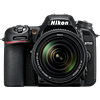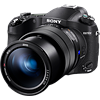Main
Model
Price
Advantages
launch
Announced
Body type
Camera subcategory
Sensor
Effective pixels
Max resolution
Sensor size
Sensor type
Processor
Image ratio w:h
Other resolutions
Sensor photo detectors
Image
ISO
Boosted ISO (minimum)
Boosted ISO (maximum)
White balance presets
Custom white balance
Image stabilization
Image stabilization notes
Uncompressed format
JPEG quality levels
Photography features
Minimum shutter speed
Maximum shutter speed
Aperture priority
Shutter priority
Manual exposure mode
Subject / scene modes
Built-in flash
Flash range
External flash
Flash modes
Continuous drive
Self-timer
Metering modes
Exposure compensation
AE Bracketing
WB Bracketing
Maximum shutter speed (electronic)
Screen / viewfinder
Articulated LCD
Screen size
Screen dots
Touch screen
Screen type
Live view
Viewfinder type
Viewfinder coverage
Viewfinder magnification
Viewfinder resolution
Videography features
File Format
Videography notes
Microphone
Speaker
Optics & Focus
Autofocus
Manual focus
Number of focus points
Lens mount
Focal length multiplier
Focal length (equiv.)
Optical zoom
Maximum aperture
Digital zoom
Normal focus range
Macro focus range
Physical
Weight (inc. batteries)
Dimensions
Environmentally sealed
Battery
Battery details
Battery Life (CIPA)
Storage
Storage types
Connectivity
USB
HDMI
Microphone port
Headphone port
Wireless
Wireless notes
Remote control
Other features
Orientation sensor
Timelapse recording
GPS
GPS notes
Samples
Videos
Summary
The Nikon D7500 maximum resolution of 5568 x 3712 pixels (21 megapixels) is better in comparison with the Sony Cyber-shot DSC-RX10 IV maximum resolution of 5472 x 3648 pixels (20 megapixels). The Nikon D7500 is equipped with larger sensor compared to the Sony Cyber-shot DSC-RX10 IV: APS-C (23.5 x 15.7 mm) versus 1″ (13.2 x 8.8 mm). This is very significant difference between these cameras because big sensor allows the camera owner to produce photos of the higher quality. The Nikon D7500 offers a wider ISO range of 100-51200 than 100-12800 ISO range of the Sony Cyber-shot DSC-RX10 IV. Such ISO numbers allow the photographer to produce good quality photos in dim light conditions. The Nikon D7500 has more number of white balance presets - 12. This specification gives the camera owner more control over colour. The Sony Cyber-shot DSC-RX10 IV has more number of focus points than the Nikon D7500: 315 vs 51. More focus points means less risk of losing focus lock when following a moving subject.
The Sony Cyber-shot DSC-RX10 IV display is better as it has more number of screen dots 1,440,000 in compare to 922,000 dots of the Nikon D7500 display. The higher dot count display is better for reviewing images on your camera. The Nikon D7500 offers better fastest shutter speed - 1/8000 second.
The Nikon D7500 battery life is better than the Sony Cyber-shot DSC-RX10 IV battery life. In accordance with CIPA standards the camera owner will be able to capture 950 shots with the D7500 and only 400 with the Cyber-shot DSC-RX10 IV. The Nikon D7500 weighs 640g which is 455g less in comparison with the weight of the Cyber-shot DSC-RX10 IV. The Nikon D7500 can utilize optional accessory GPS devices. This feature can be useful if you like to travel, to be able to check the picture metadata and see exactly where a picture was produced.
The D7500 has 15 advantages and the Sony Cyber-shot DSC-RX10 IV only 3 so the D7500 will become the best buy. Get the list of the best offers on Amazon.


